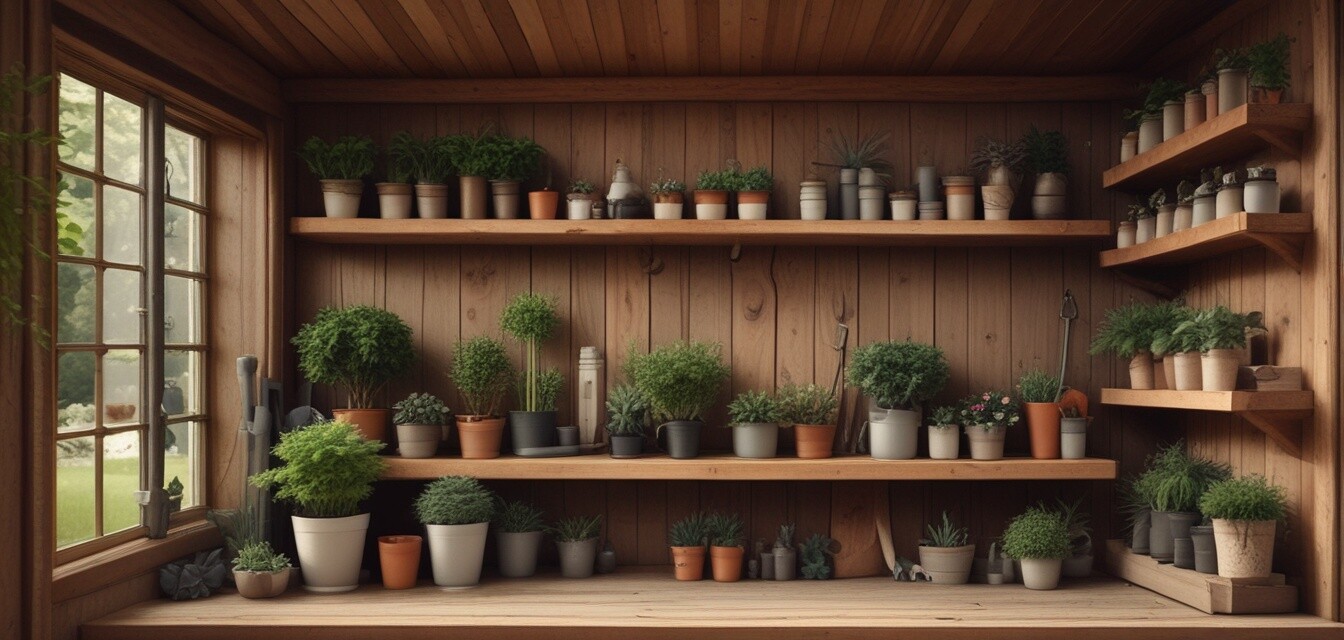
Essential Features to Look for in a Garden Shed
Key Takeaways
- Choosing a garden shed involves considering size, materials, and functionality.
- Durability and weather resistance are crucial for the longevity of your shed.
- Smart features such as ventilation, windows, and storage options enhance usability.
- Evaluate your gardening needs and available space before making a purchase.
- Research reputable brands and read customer reviews for informed decisions.
When it comes to gardening, a reliable garden shed can serve as a sanctuary for your tools, equipment, and supplies. However, selecting the right garden shed can be overwhelming with numerous options available. In this guide, we’ll break down the key features to consider, ensuring you find the perfect shed that meets your gardening requirements.
Why a garden shed is essential
A garden shed is not just a storage solution; it plays a vital role in the overall functionality of your gardening space. A well-designed shed can help you:
- Organize gardening tools and supplies
- Protect tools from harsh weather conditions
- Create a dedicated workspace for potting plants and other garden tasks
- Enhance the aesthetics of your garden
Key features to consider
1. Size and space
Before diving into designs or materials, assess the space available in your garden. A good garden shed should:
- Fit comfortably within your garden layout
- Provide ample storage for all your tools and equipment
- Allow for future expansion of your gardening activities
2. Materials
The materials used in construction greatly affect the durability and maintenance of your shed. Common materials include:
| Material | Pros | Cons |
|---|---|---|
| Wood | Natural look, customizable, strong | Requires regular maintenance, susceptible to rot |
| Metal | Durable, fire-resistant | Can be prone to rust, less insulation |
| Plastic | Low maintenance, lightweight | Less sturdy than wood or metal, can fade over time |
3. Durability and weather resistance
Consider the climate in your area. A well-built shed should withstand elements such as:
- Rain
- Snow
- Strong winds
Opt for weatherproof materials and good roofing to ensure longevity. The features that enhance durability include:
- Waterproof foundation
- Good quality paint or sealant to prevent rotting
4. Ventilation
Proper ventilation is essential to prevent moisture buildup inside your shed, which can lead to mold and mildew. Features to look for include:
- Windows that open
- Ventilation grills or vents
- Roof ventilation to allow hot air to escape
5. Natural light
Utilizing natural light can create a pleasing working environment. Adding windows or a skylight can:
- Reduce the need for artificial lighting
- Enhance the ambiance of your shed
6. Security
Gardening tools can be expensive and valuable. Ensure your shed is secure with:
- Sturdy locks
- Reinforced doors and windows
7. Storage options
To maximize your shed's functionality, consider built-in storage options such as:
- Shelves for tools and supplies
- Hooks for hanging tools
- Workbenches for potting and repairs
Additional tips for choosing a garden shed
Beginner’s tips
- Start by planning your layout and the types of tools you’ll need to store.
- Consider the style of your home and garden to find a shed that complements your outdoor aesthetic.
- Check for local building codes and restrictions before installation.
Conclusion
A garden shed can be a vital addition to your gardening toolkit, providing storage, organization, and a workspace for your projects. By considering the essential features outlined in this guide, you can choose a shed that meets your specific needs and enhances your gardening experience.
Pros
- Enhances garden organization
- Protects tools from weather damage
- Provides a functional workspace
Cons
- May require maintenance depending on materials
- Initial cost can be significant
For more insights on enhancing your gardening experience, don't miss our other articles such as Buying Guides, or explore our categories on Greenhouses & Plant Protection and Garden Tools.